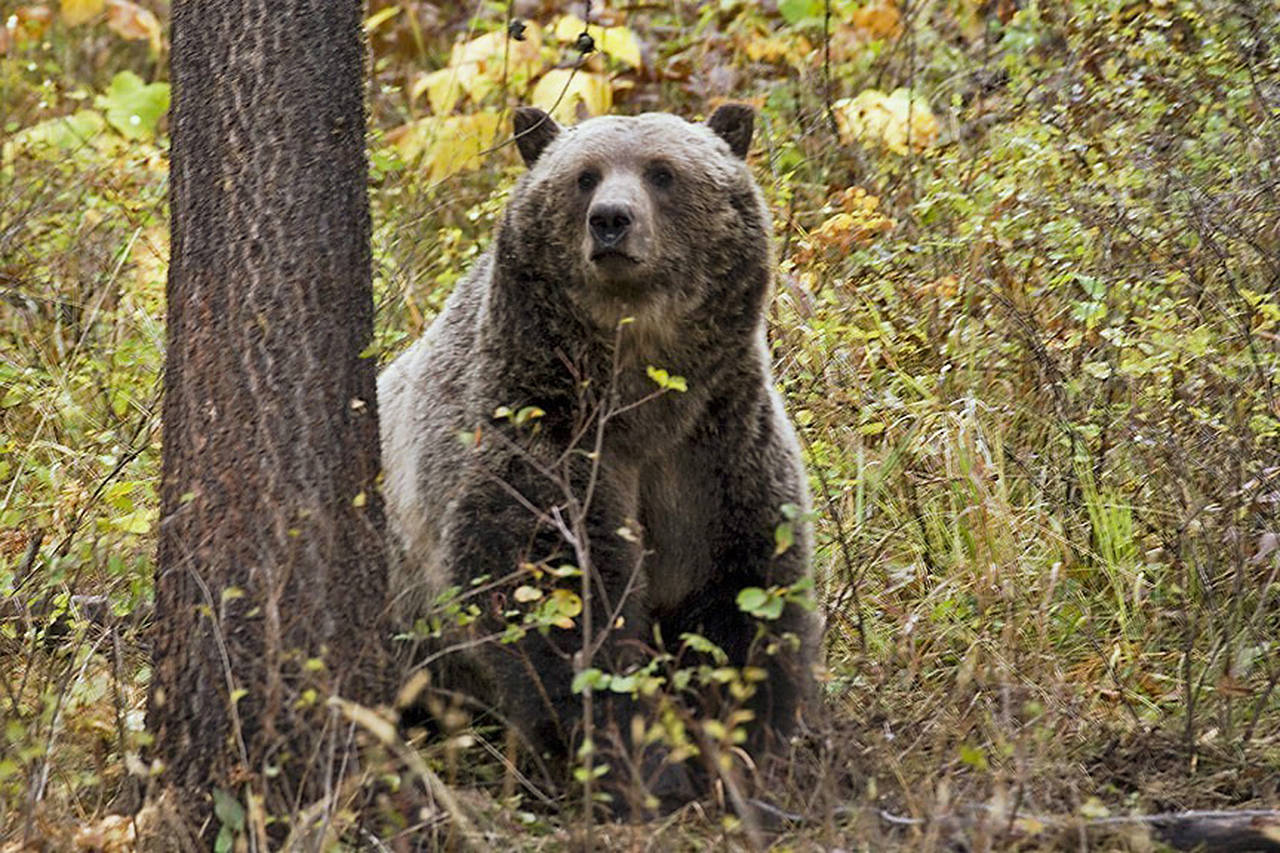By The Herald Editorial Board
Grizzly bears are not known as prolific breeders. Typically, the bears give birth to one or two cubs every three or four years, and only about 50 percent of cubs survive to adulthood.
Even slower in gestation, however, has been a proposal to reintroduce grizzly bears to the North Cascades, a former range for the omnivores that is now believed to host no more than 10 bears in a 9,800-square-mile ecosystem, and may only be home to one or two bears, most likely in the Canadian reaches of the habitat. The last confirmed sighting of a grizzly in Washington’s North Cascades was in 1996.
It’s been a similar span of time — 22 years — since a recovery plan, recommending the gradual reintroduction of grizzlies to their former range in Washington state, was released for review. And that was preceded by years of habitat study begun in the late 1980s.
More recently, a decision on implementing the recovery plan was halted by then-Secretary of Interior Ryan Zinke in December 2017, only to get Zinke’s endorsement and a restart pledge the following spring, then again abandoned last August before Zinke, a former Montana congressman, resigned at the end of 2018 over ethics allegations.
At the end of last month the plan’s hiberating review again emerged from its den, with the National Park Service and U.S. Fish and Wildlife Service announcing the reopening of a 90-day comment period on the recovery proposals and its environmental impact statement.
Not that the federal agencies haven’t heard from the public before. More than 125,000 comments were received during an earlier comment period, including a series of public hearings, including meetings in 2017 that drew more than 300 people in Darrington and nearly 90 in Sultan.
There’s understandable wariness among the communities closest to the backcountry where grizzlies could be reintroduced, but — as we’ve written previously — the benefits outweigh relatively low risks that can and have been managed elsewhere.
Three options in the recovery plan offer different rates of reintroduction. Depending on the rate of relocation of bears from other regions in the West, the plans seek a self-sustaining population of 200 bears that would take as few as 25 years or as as long as a century to build; a fourth no-action option calls for habitat improvements that could aid in recovery but would not use relocation of bears to give restoration efforts a jump-start.
The reintroduction of grizzly bears to the North Cascades could mirror efforts elsewhere in the West.
In the Cabinet-Yaak ecosystem in northwest Montana, over three decades, a population of fewer than 15 grizzlies grew to an estimated 55 to 60 bears, Conservation Northwest reports. The Greater Yellowstone Ecosystem saw its grizzly population rebound from fewer than 150 bears in the 1970s to support about 700 grizzly bears today within its 9,200 square miles, a higher concentration of bears than is sought for the North Cascades.
Grizzlies do attack and do kill. Since 2010, there have been eight fatal attacks in the West, excluding those in Alaska and Canadian provinces.
But there’s a greater threat to life and limb in the North Cascades from climbing accidents, rock falls, avalanches and exposure, not to mention inattention when taking selfies.
Far more people die in auto accidents on their way to national parks than in attacks by bears, brown or black. Drownings, vehicle accidents and falls were the leading cause of death in national parks between 2003-07. Wildlife attacks were the least likely cause of death for that period.
Wilderness is just that, something that requires attention and precaution for all present dangers.
Which is why grizzlies need to be returned to the North Cascades, to restore what has been lost in their absence.
Grizzlies play an important ecological role in forests, in particular for what bears are famous for doing in the woods, which distributes fertilizer and plant seeds. Additionally, their rooting for bulbs, roots and insects contributes to a healthy ecosystem.
A return of grizzly bears to the North Cascades would also help return the awe and respect for nature that should be felt when in the wilderness.
With ample and sparsely populated space throughout the North Cascades region that could ably support a sustainable population of bears, the reintroduction of grizzlies would strengthen a species that remains listed as threatened under the Endangered Species Act.
A few words in support of that act also wouldn’t hurt.
Comment
To comment on the North Cascades grizzly bear reintroduction plan and impact statement, go to parkplanning.nps.gov/grizzlydeis or comment by mail to Superintendent’s Office, North Cascades National Park Service Complex, 810 Highway 20, Sedro-Woolley, WA 98284. Comments are due by Oct. 24.
Talk to us
> Give us your news tips.
> Send us a letter to the editor.
> More Herald contact information.

























